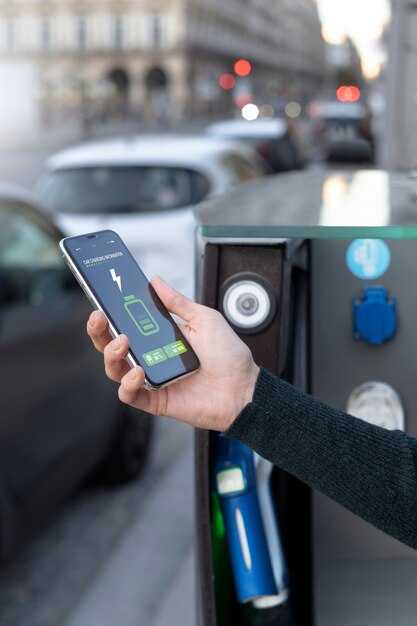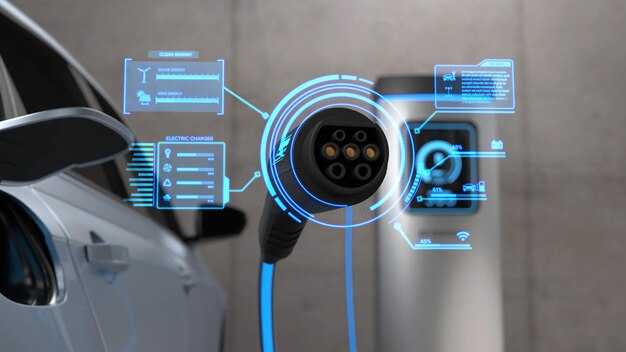Start with a targeted rollout: deploy 50 kW EV power hubs along 12 cross-country corridors and 5 key urban routes within 18 months, funded by a plan that blends grants and utility-backed financing. This approach will bring robust coverage across critical corridors, helping residents rely less on combustion.
Coordinate with eight regional Departments of Transportation to align procurement, siting, and interoperability. Standardize equipment specifications, leverage open data, and synchronize with utility-owned assets to reduce cost per connection and accelerate deployment. These actions streamline operations, cut procurement lead times, and allow manufacturing to scale. thanks to standardization, procurement cycles shorten and vendor onboarding becomes more predictable.
As of 2025, the program spans more than 2,000 sites with rapid 50–150 kW hubs, supporting urban and rural coverage. The plan anticipates adding another 2,000 sites by 2027, expanding coverage to over 85% of residents within 25 miles of a hub. This milestone aligns with the biden administration’s plan and commitments to reduce idle time, lower emissions, and boost local manufacturing.
Beyond urban corridors, rural resilience is prioritized to ensure critical workers and seniors have reliable access; even still, demand-based siting minimizes gaps and helps your agencies reach the goal of universal access faster than before. By measuring utilization, agencies can capture savings from shared facilities and lower operating costs while shrinking combustion emissions more efficiently than expanding diesel fueling in isolated pockets.
From a practical vantage, ensure readiness across the grid, permitting reform, and power procurement so assets come online in step with procurement cycles. Your leadership should appoint a single coordinator to bring all stakeholders onto one dashboard, tracking milestones and ensuring coverage is folded into every corridor plan.
thanks to a unified push, the region can move from a combustion-heavy system to a durable, low-emission network that benefits residents, fleets, and a broader manufacturing ecosystem. Said plainly, these steps help the united effort and the plan to capture long-term value from cleaner mobility, while supporting manufacturing and operations in a sustainable fashion.
Strategic overview of leading DOT investments and Florida’s dedicated EV charging initiatives
Adopt a phased, partnerships-led plan to deploy a full corridor network of electrified recharging nodes, prioritizing I-95, I-75, I-4, I-10, and regional connectors. Use incentives to bridge capex gaps and speed the rollout; the government itself should maintain strong oversight with clear ownership and performance milestones. Ensure technical standards are open and interoperable to enable seamless use and avoid vendor lock-in. Provide public updates about cost performance and site utilization.
Florida’s dedicated EV network initiative blends federal allocations, state dollars, and private capital to accelerate access along major routes and in regional hubs. The plan prioritizes high-power units with storage to reduce peak demand; a mix of ownership models: publicly owned sites, PPPs, and merchant-operated stations under long-term agreements. Technical management will rely on interoperable software (OCPP) to enable mobility across networks. The rollout includes regional readiness work, workforce training, and monitoring to show reductions in consumer wait times.
Lessons from michigan show that business-led incentives, streamlined permitting, and coordinated regional planning shorten cycles. Florida should implement several competitive solicitations annually, maintain a clear ownership path, and include regions in planning to ensure equitable access.
Global investors look for predictable rules and robust governance; Florida’s strategy should publish annual updates in press materials and maintain a transparent framework to boost confidence and demonstrate commitment.
Legal and strategy notes: a formal framework is needed to guide partnerships, incentives, and siting; spell out ownership and revenue sharing; address land-use, utility coordination, and resilience; include risk-transfer clauses and ongoing innovations; a joet note signals the need for a simple, auditable process.
Eight DOTs: funding scales, deployment miles, and project milestones

Tie funding scales to deployment miles and project milestones, with a December review to reallocate unused portions toward high-coverage corridors and maritime routes. This creates a mode for progress and will incentivize steady performance across their networks.
Funding scales should span baseline grants for planning and development, plus larger allocations for rapid deployment along interstate corridors and port facilities, with a dedicated set for receivers who operate regional fleets. Home-based fleets can access dedicated support through these programs, and the commitment is to deliver coverage equitably while reducing energy costs by leveraging alternative options and technology integration across electric networks.
Prioritize deployment miles that link urban centers with rural hubs, targeting 2,500–6,000 miles over the next three years, with a mix of mode deployments to support a range of electric vehicle needs. This reduces downtime and improves coverage during peak periods.
Milestones include public procurement windows, installation of equipment, integration with grid technology, and handover to receivers by year-end, then quarterly status checks. This ensures tangible progress and a trackable commitment for each site.
Equity focus: allocate dedicated funds to underserved regions, including maritime-adjacent locations and remote communities, to ensure equitable access to electric networks. The plan uses transparent metrics to measure progress and offers alternative financing options to smaller counties during the rollout.
Operational guidance: encourage agencies to incentivize installers through streamlined approvals and standardized equipment options, while maintaining robust oversight. This reduces risk and improves reliability for vehicle operators, fleets, and receivers, and supports ongoing maintenance and service continuity.
Bottom line: a disciplined funding framework with measurable miles and milestones creates a practical path to broad coverage and a resilient, low-emission transport network. Their commitment to shared best practices and ongoing December reviews will help each jurisdiction pick the right technology mix and reduce total cost of ownership for vehicle operators.
Florida’s three-pronged approach: corridor programs, urban charging, and maintenance plans
Recommend deploying 12 high-capacity electric refueling nodes as corridor programs along I-95, I-75, and I-4 within three years to close long-haul gaps and boost freight efficiency. Each site should host at least two fast units at 350 kW+, backed by on-site solar and storage to flatten peaks and provide resilience. This spectrum of stations reduces diesel burn and expands zero-emission coverage for long-distance trips. The Florida Department of Transportation should lead this effort through a public-private model with a legal framework for siting, permitting, and procurement, plus clear ownership arrangements. The latest report and press materials show growing demand from aviation/freight corridors, so align with ports and airports to maximize synergies.
Urban refueling networks in Miami, Orlando, Tampa, and Jacksonville should prioritize curbside and park-and-ride hubs with 150–350 kW units, paired with policies that minimize land-use friction. Focus on commercial partnerships that bring private capital alongside public funds, with ownership models that secure long-term stewardship and clean storage to smooth demand. A governance approach that includes their land-use rights supports fleets, transit agencies, and municipal programs, while delivering 24/7 availability. Under biden guidelines, federal grants and loan programs can unlock matching funds, so the plan should align with the latest priorities to promote investments across utilities, airports, and seaports and extend networks for zero-emission coverage.
Maintenance plans should establish a performance-based upkeep regime: quarterly field checks, software updates for remote monitoring and grid resilience, storage-health diagnostics, and a public report on uptime and outages. Establish a 24/7 help desk, SLAs with site hosts, and a risk-management framework for severe-weather events. Use data from pilots to optimize siting and resource allocation, while ensuring policies promote sustainable, organic growth and legal ownership structures. The latest storage technologies and zero-emission storage options help stabilize networks during peak demand, and coordination with aviation, tourism, and commercial freight programs will broaden image and coverage.
Public–private partnerships: models, contracts, and performance expectations

Recommendation: Implement performance-based, availability-centered arrangements that guarantee electrified points are ready when needed and tie payments to actual use and service levels; deploy a centralized database from day one to track metrics across sites, with a transparent source for residents and regulators; ensure plans align with decarbonize targets for vehicle fleets across mode during the year and into the medium- and long-term horizons.
- Availability-concession: private partner handles design, build, finance, operate, and maintain electrified points; payments hinge on uptime, readiness, and response times; penalties for outages; third-party verification via the database; risk transferred from public to private unless performance standards are met.
- DBFOM/DBFOMT style: design-build-finance-operate-maintain-transfer; operator assumes long-term responsibility; payments tied to uptime and throughput; data streams into database; cross-jurisdiction scalability across regions.
- Joint venture with public equity: co-create ownership to align incentives with residents and environmental goals; governance includes milestones and a clear exit or buyout path; include a path to decarbonize through improved batteries and broader electrified networks across regions.
- Hybrid milestone-based PPP: mix upfront grants, milestone payments, and revenue sharing; incentives to accelerate deployment and expand to new sites; require ongoing reporting to a public source and continuous improvement; ensure these steps are documented in the press and dashboards.
- Performance-based contract terms: define KPIs for uptime, readiness, safety, and environmental impact; set baselines and escalation paths; require independent verification and real-time data feeds into the database; include renewal and adjustment clauses to reflect technology changes.
- Data governance and transparency: mandate a single source of truth; provide access rights for public authorities and researchers; ensure privacy and cybersecurity; enable cross-system interoperability to support cross-site comparisons; place data where it is easy to find and reuse (public place).
- Pricing, risk-sharing, and contingencies: specify pricing mechanisms with inflation adjustments; include risk-based reserves and contingency provisions; provide options for medium- and long-term financing; align payments with actual, verifiable performance.
- Procurement safeguards: require open competition, non-discrimination, and performance-based bidding; publish performance benchmarks to support residents’ trust; include press-ready updates on milestones.
Performance expectations
- Availability and reliability: target uptime of electrified points at 99.5% during baseline hours, with 24/7 monitoring; MTBF targets; rapid repair windows and spare-part logistics; data logged in the central database to enable trend analysis across year frames.
- Utilization and mode coverage: measure daily interactions by vehicle type and mode (passenger, bus, freight, rideshare) across networks; ensure expansion aligns with projected driving demand and decarbonize goals; plan for medium- and long-term growth to cover more corridors.
- Environmental impact: quantify emissions reductions across the system; track energy mix and uptake of improved batteries; report decarbonization progress and publish these figures in annual reports; tie incentives to environmental metrics.
- User experience and accessibility: ensure intuitive access, fast connection times, and consistent payment flows via a unified source; keep residents informed with press-ready updates about milestones; support multilingual interfaces and accessible design.
- Governance and oversight: align with global best practices and biden administration guidance; establish independent audits and a neutral oversight body; maintain a transparent database and public dashboards to show progress across communities.
- Risk management and resilience: develop cross-modal resilience plans touching vessels, aircraft, and vehicle segments; ensure supply chain continuity for batteries and power electronics; include cyber-security safeguards and disaster response protocols; continue to refine contracts as technology and needs evolve.
Site selection and grid readiness: siting criteria, permitting, and interconnection steps
Begin with a concrete recommendation: pre-screen 15–20 candidate sites along rural and medium-traffic corridors that offer at least 1 MW of feeder capacity and clear tie-in routes to the electric system to minimize upgrade costs and avoid down time.
Adopt specific siting criteria: proximity to localities with high on-road demand; access to existing feeders with spare capacity; suitability for scalable electrified fueling configurations; minimal environmental constraints; room for future expansion; and alignment with low-emission goals to support cleaner mobility.
Grid readiness should quantify power supply margins and planned upgrades; map the range of potential modifications and coordinate with agencies such as the energy office, environmental authorities, and public utility commissions; include gdot for corridor projects where applicable; this focused cross-agency effort is a must for ambitious programs.
Permitting and interconnection steps require a full-effort plan: initiate a pre-application with the host utility and the grid operator; run System Impact Study and Facilities Study; negotiate an Interconnection Agreement; file zoning and environmental permits through a single-window process where possible; budget typical lead times and use them to plan the schedule; in ohio, early alignment with localities can cut total time by up to one third.
Costs and funding strategy: lock in a 5–7 year investment horizon; itemize upfront upgrades (interconnection, trenching, transformers); pursue a dedicated fund and explore cost-sharing with municipal partners; design contracts to reflect lifecycle savings from energy management and remote monitoring.
Operational readiness and partnerships: specify equipment that is compatible with electric-grid realities; work with manufacturers to ensure rugged hardware and standard interfaces; set milestones for on-road electrified service delivery; maintain a focused pipeline in rural and localities, and keep driving demand through clean, low-emission power.
| Criterion | Guidance | Typical Lead Time / Range | Responsible Agencies |
|---|---|---|---|
| Feeder capacity and grid readiness | Target 1–5 MW per site; verify spare capacity on the local feeder; plan for future expansion to 5–10 MW if needed | 1–3 months for initial assessment; upgrades may extend to 6–12 months | Utility, local utility commission, agencies, manufacturers |
| Siting in rural vs localities | Prioritize locales with high on-road demand; prefer sites with room for multiple stations and easy access | 2–6 weeks for site-screening; 3–6 months for construction-ready | Municipalities, zoning boards, environmental agencies |
| Permitting approach | Single-window or coordinated permit package; environmental and land-use approvals included | 4–8 weeks initial review; total 3–6 months | Planning dept, zoning, environmental agencies |
| Interconnection steps | Pre-application, System Impact Study, Facilities Study, Interconnection Agreement; plan for upgrades | 3–6 months for studies; 3–6 months for construction | Utility, grid operator, regional transmission organization if applicable |
| Costs and funding | Document grid-upgrade costs; explore dedicated fund and potential cost-sharing with partners | Varies by project; typical capex window 4–12 months after approval | Public fund managers, agencies, localities, manufacturers |
| Partnerships and procurement | Engage manufacturers early; specify equipment with open interfaces and modular design | 3–6 months for procurement cycles; ongoing for deployment | Manufacturers, third-party integrators, localities |
| Regional exemplars | Use ohio pilot sites; leverage gdot corridor guidelines for cross-border routes | Variable by project; begin before site selection | ohio, gdot, energy office |
Standards, interoperability, and equipment choices across DOT networks
Adopt a nationwide interoperability framework for power exchange sites: default CCS connectors with universal adapters for legacy fleets, and OCPP 2.x for remote management and diagnostics. This creates a consistent user experience across highways and travel corridors and requires a single set of data and safety standards to plan, create, and fund a streamlined procurement process that minimizes down time across three major routes.
Interoperability across networks hinges on open data and modular software: adopt OCPI for roaming energy services across networks, standardized fault codes, and a common asset tagging system so maintenance crews can capture faults and restore service quickly. Require secure APIs and a shared incident-response playbook to reduce down times and ensure seamless operations for all users, from off-road fleets to urban travelers.
Equipment choices should be modular and serviceable: bulky, fast-power modules capable of delivering 250–350 kW for heavy-duty corridors; smaller sites in urban travel nodes should offer 50–150 kW. Use liquid-cooled, hot-swappable cabinets and prefabricated power rails to speed deployment. Store energy on-site with batteries to level peaks and capture renewable surges for multiple purposes.
A three-pronged plan covers highway corridors, populated urban centers, and maritime interfaces: highways for heavy-duty and travel fleets; populated areas for municipal and commercial use; next, ports and vessels with shore-power and hydrogen-ready options. Pipeline-friendly footprints ensure gradual expansion; make hydrogen sources available at relevant sites and align with three-year, five-year, and longer-term milestones. This approach also accommodates off-road needs within construction and mining operations while enabling continuous service across the pipeline of growth.
Funds should flow through a joint procurement pool with clear cadence: initial phase funds for fast deployment on high-demand routes; next phase funds for broader adoption; long-term funds to integrate ports, coastal facilities, and inland waterways. Tools like bulk-buy agreements, shared testing labs, and standardized training cut costs and capture efficiencies. The plan seeks private partners and federal funds to build a reliable, justifiable pipeline that serves aims across multiple purposes.
Governance requires a formal body to approve standards, oversee interoperability, and maintain the equipment library. Regular audits ensure safety, reliability, and compliance with NFPA, SAE, and UL guidelines. The outcome is faster deployments, lower total cost of ownership, and a source of power that supports travel across networks with confidence. Thanks.

 Top 8 State DOTs Investing in EV Charging Infrastructure">
Top 8 State DOTs Investing in EV Charging Infrastructure">
